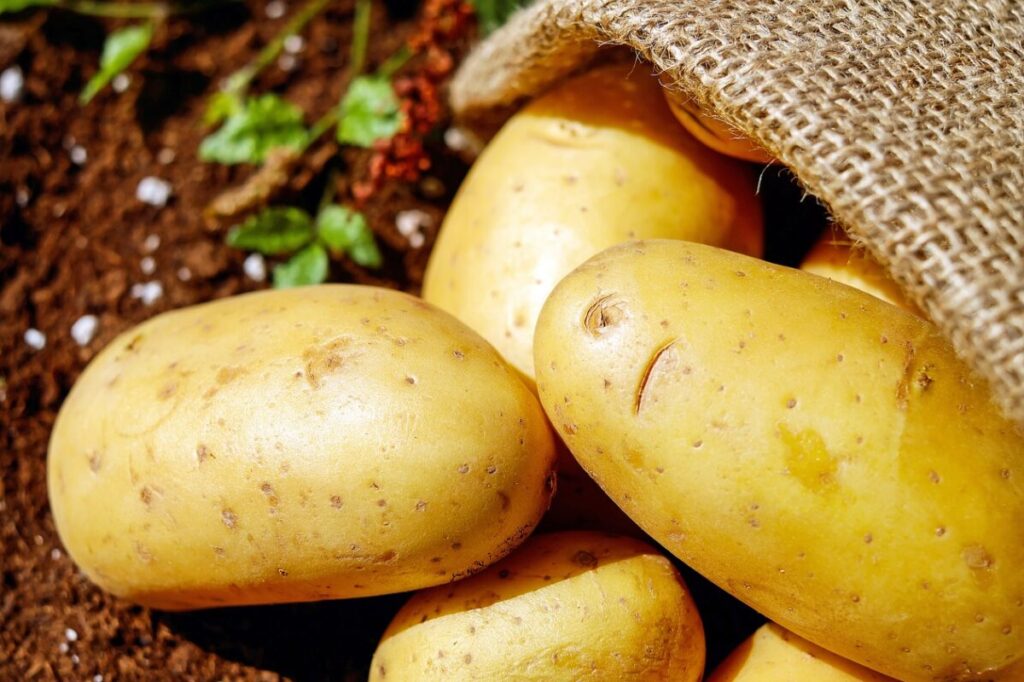Potatoes are one of the most important food plants. They provide lots of nutrients and digestible carbohydrates, are great to cook with, and are just delicious to eat!
Of course, buying potatoes in the grocery store is an easy task, and relatively cheap. However, taking the time to raise your own spuds can provide a reward of its own — the fresh taste is like no other.
Interested in trying it out for yourself? Read on to learn how to grow some amazing potatoes this season!

Varieties of Potatoes
There are numerous varieties of potatoes sold, but they can all be divided into three general categories. These categories are:
- Round white potatoes: mostly used to boil or make chips.
- Red skinned potatoes: typically used for baking, boiling, and in potato salads.
- Russets and long white potatoes: these are great for baking, boiling, or frying.
Additionally, potatoes can be further categorized into early, mid-season, and late harvest varieties.
How to Plant Potatoes
There are two main ways to plant potatoes:
- Trench Method — The traditional planting method for growing potatoes involves digging a trench 6 inches deep and placing the seeds within, ensuring the eyes of the seed face up. While the plant grows, the soil should be hilled along the sides of the plant, keeping the soil loose and preventing surface tubers from being exposed to sunlight (this will turn them green and somewhat toxic). Hilling can stop when plants start to flower.
- Scatter Method — This method involves simply laying the seeds on the soil before covering them with a few inches of mulch. Continue to layer the mulch as the plants grow. This choice is not great for areas with rodent problems.
Additionally, potatoes can be grown in pots or containers to take up less space.
Caring For Your Growing Potatoes
Light and Temperature
To help your potatoes thrive, ensure they’re planted in an area where they will receive full sun. In fact, the more sun, the better! Potatoes should get at least six hours of sunlight each day to thrive.
But be careful, the tubers will need to be protected from the sun if they grow too close to the surface. To protect them, simply mound the soil up to near the stem of the plant as it grows.
As for temperature, the soil should be at least 40 degrees Fahrenheit before starting to grow the potatoes. For areas with cool summers, potatoes are known to thrive; the potato tubers will grow best when the soil temperature is between 60- and 70-degrees Fahrenheit.
However, they will stop growing entirely if the soil reaches 80 degrees Fahrenheit. To keep the tubers cool, try mulching around the plants. This can help to keep the soil as much as 10 degrees cooler.
Areas where the summers are warmer typically find better results when growing potatoes as a winter crop.
Soil and Water
Potatoes prefer to grow in soil with acidic pH levels between 5.0 and 6.0. Any more acidic and it is likely the potatoes will produce rough spots as they grow. In addition, it is important to keep the soil loose and well-draining.
Make sure the plants get a steady water supply, getting at least one inch each week. The plants are sensitive to drought conditions, especially when flowering so be sure to mulch around the plants to help preserve moisture.
